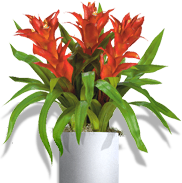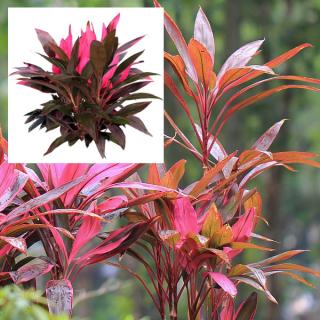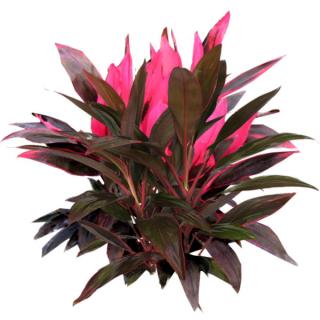Cordyline
See all Indoor Tropical Plants
Also known as the "Ti Plant," Cordyline is a woody plant with flowery leaves that are most commonly tinted in tones of burgundy — although some varieties have shades of green, red, brown, and deep pink. This plant is similar to many varieties of Dracaena, and Cordyline is often found categorized together with Dracaena, although it is a different genus altogether. Cordyline can add rich, deep colors to any indoor plant display. When young, it makes an attractive low-to-medium height leafy specimen. After a few years, it can reach several feet on one or more woody stems — ideal for a container planting or a large display area.
Cordyline does well in low to medium light. It requires a consistently moist (not wet) soil during the growing season, but can be allowed to dry slightly between waterings in the winter. This plant is somewhat more demanding of higher humidity; it may survive okay in dryer areas, but it will grow more lush if there is adequate moisture in the air.



